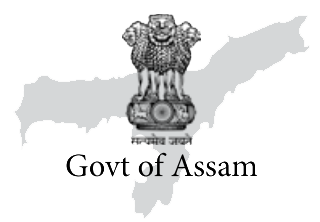Assam is among the seven States in the country to record the steepest decline in ‘multidimensional poverty’ between 2015-16 to 2019-21, according to the NITI Aayog’s ‘National Multidimensional Poverty Index: A Progress Review 2023’ report released in July.
The report stated that a record 13.5 cr people moved out of multidimensional poverty in India.
While the country registered a decline of 9.89% in number of India’s multidimensionally poor from 24.85% in 2015-2016 to 14.96% in 2019-2021, Assam registered a decline of 13.30% in the same period from 32.65% to 19.35% . A total of 46,87,451 people in Assam moved out of multidimensional poverty between 2015-2016 and 2019-2021, the report said.
Among the top performing districts, Hailakandi has registered a decline in multidimensional poverty from 51.07% to 36.22%. Karimganj district witnessed a decline from 46.02% to 32.93%. Cachar recorded a decline from 42.29% to 30.58% whereas in Dhubri the figure fell to 26.02% from 51.06%. (See Box)
The report stated that rural areas of the State witnessed a remarkable decline in poverty from 36.14% to 21.41% while in the urban area it declined from 9.94% to 6.88%.
Welcoming the report, Rouhin Deb, Chief Economist, Chief Minister’s Secretariat, Government of Assam said that it reflects good governance, citizen centric delivery and proper implementation of schemes on the ground. “Our Government’s flagship schemes like Orunodoi, Kanaklata, micro-finance relief specifically targeted towards empowering the economically downtrodden sections of society have been one of the primary reasons for development at the grassroots,” he said talking to Asom Barta. “We had actively worked on opening Jan Dhan accounts. This has enabled us to directly transfer the benefits of schemes to beneficiaries thereby eliminating leakages. Our efforts towards increasing banking penetration have reflected in the report where we see the percentage of population deprived of banking significantly reduced from 15.38% to 3.65% in the period from 2015-16 to 2019-21.”
Amiya Kumar Sharma, Executive Director of Rashtriya Gramin Vikas Nidhi, Guwahati attributed many factors for the State’s performance. “Development in road communication and impact of income generation activities, good governance, and development of infrastructure projects in real time are the main factors for the decline of poverty in the State,” he told this reporter.
“In the last few years in Assam, we have witnessed growth of road communications, particularly in rural and semi-rural segments. This leads to development in terms of business and entrepreneurships,” he said.
He also attributed the results to micro finance activities and the fast-improving power scenario in the State besides targeted welfare measures.
The National MPI measures simultaneous deprivations across the three equally weighted dimensions of health, education, and standard of living that are represented by 12 SDG-aligned indicators.
Based on the latest National Family Health Survey (2019-2021), this second edition of the National Multidimensional Poverty Index (MPI) represents India’s progress in reducing multidimensional poverty between the two surveys, NFHS-4 (2015-16) and NFHS-5
(2019-21).













